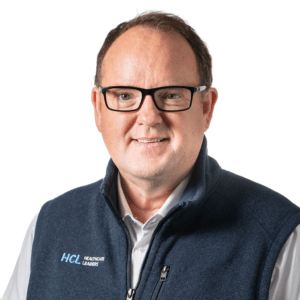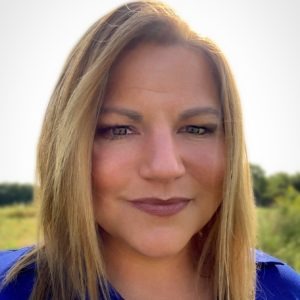Communications technology goes formal
Recent years have seen the beginnings of a boom in technologies designed to support seniors’ health and well-being in various settings, ranging from private homes to nursing and assisted living facilities. Motion sensors; monitors focusing on prevention of wounds, wandering, and falls; brain health-stimulating games—products continue to emerge and long-term care customers are trying them nationwide. Now it’s time for the next step, says Majd Alwan, PhD, Director of the Center for Aging Services Technologies (CAST), affiliated with the American Association of Homes and Services for the Aging (AAHSA), since last May. Dr. Alwan has been a world-recognized investigator of the new technologies for several years, most notably with the groundbreaking Medical Automation Research Center based at the University of Virginia and as a founding CAST investigator in 2002. As these technologies begin to spread throughout senior care and services, it is time, says Dr. Alwan, to study how well they do and under what circumstances in delivering their “value proposition.” CAST has opened up a process of inviting providers and vendors to participate in scientifically formulated pilot studies and to publish findings that will be useful to the field. Recently, Dr. Alwan amplified on the new direction CAST is taking in an interview with Nursing Homes/Long Term Care Management Editor-in-Chief Richard L. Peck.
Peck: As we enter 2008, what is the status of CAST’s efforts?
Dr. Alwan: CAST is playing a more proactive role in assisting providers in making decisions about these new technologies. We are seeking to assist them with identifying their needs, reviewing relevant technologies, identifying companies that might work with them, developing a formal study design, including valid assessment instruments and outcomes measures, then analyzing their data and publishing them. We hope eventually to accumulate evidence that these technologies work and do deliver on their value proposition, which includes more efficient staff operations, reduced staff turnover, improved quality of care and quality of life, and reduced costs.
Peck: How might interested providers get started with this process?
Dr. Alwan: A good starting point is our Web site, https://www.agingtech.org, which includes a self-evaluation form for providers and several case profiles of providers that have already become involved in investigating various technologies. Reviewing this should help them to focus on identifying their specific needs, the settings and populations they’re dealing with, which kinds of technology they wish to investigate, and the resources available to them for this—for example, whether universities, foundations, and/or companies will help fund their studies.
Peck: Will CAST’s assistance be available to for-profit providers as well as not-for-profit?
Dr. Alwan: Yes, particularly if they can sponsor or find cosponsors for their projects.
Peck: What do you think is causing providers’ interest in these technologies?
Dr. Alwan: I think they’re seeing the competitive edge this is offering them—the ability to address their waiting lists, provide home-based services and capture that market, so that when clients’ transition to a more intense level of care becomes inevitable, their facilities will be there for them. Within their facilities they will be able to provide safer environments for residents, more efficient monitoring and documentation by staff, and more stimulation to encourage resident well-being. A problem right now, though, is that the reimbursement for these technologies is lacking and will likely remain questionable until the expected results are proven.
Peck: Are there other obstacles to their adoption—for example, in terms of acceptance by seniors?
Dr. Alwan: Yes, people do have concerns about privacy and whether they can trust how the technology is being used. In my research I have found that informal caregivers, such as family members, tend to be more concerned about this than seniors themselves. Seniors can be reluctant when video cameras are involved, even if they know that the goals are to support their safety and independence. They are more accepting of less obtrusive-seeming technology, such as motion sensors, especially when they’re perceived as delivering on their value proposition—that is, offering seniors a more dignified aging experience in their own homes.
Peck: What do you see as some of the more advanced, cutting-edge approaches to these technologies today?
Dr. Alwan: In my assessment the market leaders will be those who provide the most easy-to-use and comprehensive integrated packages. Integration is important because a serious problem is that these devices typically don’t communicate with one another. Medication management devices, fall prevention monitors, anti-elopement devices—they don’t “talk” with each other or with clients’ medical records to form a comprehensive data picture of the client. Those that do so will provide a truly valuable service to clients and operators.
Peck: How well are providers doing in adapting these technologies to their operations in a practical way?
Dr. Alwan: I’ve seen several providers that have been quite successful at this. Key factors to success are ease of use, attention to staff training, and good availability of technical support.
Peck: What will be the overall thrust of CAST’s involvement in AAHSA’s spring conference this May?
Dr. Alwan: We’re putting emphasis on the relationship of technology to culture change. We will be showcasing technologies that work in easing staff workloads and making them more efficient and, as a result, helping to retain staff and reduce turnover. Putting technologies in a culture change context is a key area to explore.
For more information on CAST or on Dr. Alwan, visit https://www.agingtech.org. To send your comments to the editors, e-mail 3peck0208@nursinghomesmagazine.com.
I Advance Senior Care is the industry-leading source for practical, in-depth, business-building, and resident care information for owners, executives, administrators, and directors of nursing at assisted living communities, skilled nursing facilities, post-acute facilities, and continuing care retirement communities. The I Advance Senior Care editorial team and industry experts provide market analysis, strategic direction, policy commentary, clinical best-practices, business management, and technology breakthroughs.
I Advance Senior Care is part of the Institute for the Advancement of Senior Care and published by Plain-English Health Care.
Related Articles
Topics: Articles , Facility management , Technology & IT











